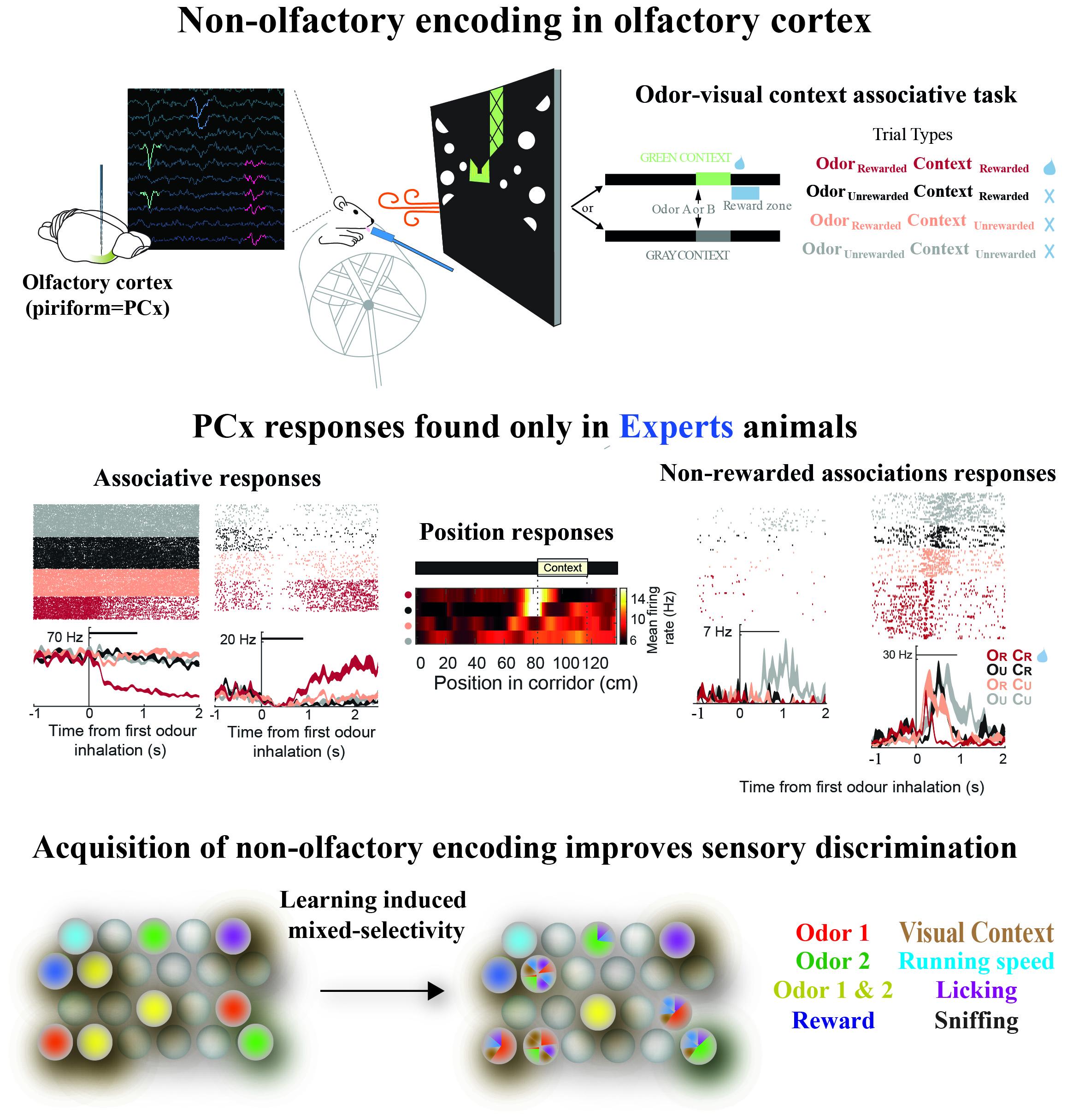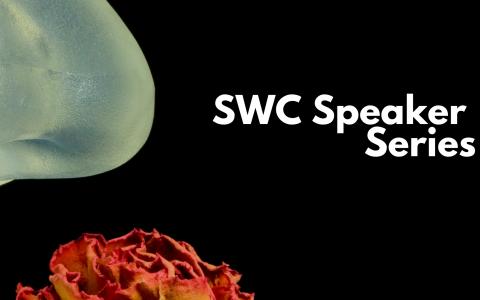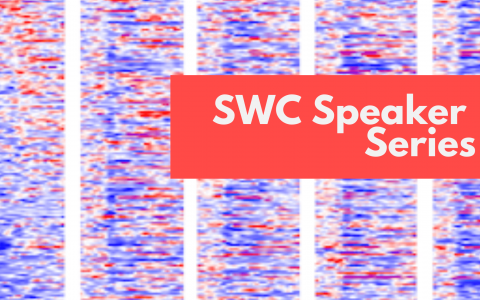
What’s in a smell?
An interview with Dr Noel Federman, IBioBA - CONICET, conducted by Alison Cranage.
The sense of smell may seem straightforward. You smell a scent in the air – a smoky aroma – the molecules are picked up in the nose and signals from the nose are interpreted by the brain. But in fact, our perception of an odour can change depending on where we are, what we’re doing, and even how we’re feeling.
If you’re in a lift, you might worry. Is there a fire? Perhaps you would try and get out of the building. But if you smell the same smoky smell while you are walking down the street towards your friend's house for a BBQ, you might smile. Past experiences, expectations, and our surroundings all play a role in shaping what we smell and how we respond to it.
Dr Noel Federman, Research Assistant Professor at the Institute of Biomedical Research Buenos Aires explores exactly this. She is studying how the brain combines smell with other types of information, like sights and rewards, to make better sense of the world. As a winner of the SWC Emerging Neuroscientist Seminar Series, Noel recently spoke at the SWC about her research. In this Q&A we discuss her latest findings.
What got you interested in neuroscience and specifically in how the brain processes information from our senses?
I have always been interested in animal behaviour and fascinated by how the brain shapes what animals do—why they explore, how they learn, and what they might be "thinking" while they interact with their environment. During my PhD, I started to investigate the relationship between the brain and behaviour, exploring how molecular mechanisms in neurons support memory formation. During my postdoc, I moved towards systems neuroscience, focusing on how brain activity relates to behaviour.
To study this, I learned to record neural activity in awake, behaving mice as they interact with sensory stimuli, like smells. I was especially interested in how the same sensory stimulus can mean different things depending on the context, and what happens in the brain when that shift in meaning occurs. We chose to study how different sensory stimuli are represented in the brain and how this representation could change when the animal learns something about the meaning of the sensory stimuli.
Now, the main topic that takes my attention is how animals learn and how activity in the brain supports that learning.
What gaps were you aiming to address with your work on odour discrimination?
The main question of the work is how the same smell triggers different kinds of behaviour, and how this sensory experience is represented in the brain. We are particularly interested in sensory cortices, which are located at the beginning of sensory processing pathways. Primary sensory cortices were traditionally seen as brain regions that encode the physical or chemical properties of the outside world. For example, if you smell cinnamon, your primary olfactory cortex would activate the same way every time, reflecting the identity of that odour: cinnamon. But in real life, meaning matters.
Take this Argentine example: if you smell smoke on the street, you might panic, thinking there's a fire. But if you're approaching a friend’s house for a barbecue and hear people laughing, that same smell might make you feel happy, anticipating a fun time. So, adding some other ‘ingredients’ to the sensory stimulus, like the environment in which it’s presented and the expectation of a rewarding situation, such as meeting your friends, helps you interpret what the odour is really about. This made us wonder: what happens in the brain when the same odour means different things? Is the primary sensory cortex just a passive recorder of smells, or can it also reflect meaning and experience?
Particularly the olfactory cortex - can it encode different variables like visual cues, or motivational cues, or behavioural cues? We didn’t know if this was the case. We also wanted to know the function of the sensory and non-sensory inputs arriving into this area.
What are your main findings so far?
We found that the primary olfactory cortex, which is at the beginning of the representation of odour in the brain, not only responds to odour, but it also represents other aspects of an animal’s experience. I was really surprised to find so many non-olfactory responses in the olfactory cortex, especially the responses to visual context! There was a study published a couple of years before ours that reported positional responses in the piriform cortex of freely moving rats, but no one had seen such a wide variety of response types in any sensory cortex. That was the first reason we were so excited.
We went further and explored the function of these diverse, non-olfactory responses in the olfactory cortex, a question that hadn’t been studied before: what is the role of such varied information arriving in a sensory cortex? That led to the second reason for our excitement: we discovered that the emergence of this diverse input in the olfactory cortex with learning actually enhances sensory discrimination at the level of neural circuits and also correlates with improved behavioural performance.
For example, neurons in the piriform cortex – in the olfactory cortex in mice – represent different behavioural aspects of a task where an animal has to learn a smell to get a reward. These neurons represented visual information, and what the animal is doing, like licking or running or inhaling.
We found that thanks to the acquisition of these signals, after learning, an animal could better discriminate between different odours in the task.

How do neurons in the olfactory cortex change after learning?
We use the term ‘mixed selectivity’ – which is related to the ability of a single neuron to integrate different kinds of information.
At the beginning of our experiments, when animals didn’t know about the task, a neuron would respond to one particular variable – the smell. Later on, as the animal learned the task, a neuron in the olfactory cortex started to integrate other information – for example, it also responded to visual information. I think that these non-olfactory ‘ingredients’ in the responses of the olfactory cortex neurons illustrate how this sensory region dynamically interacts with other brain areas during behaviour. The changes that occur after learning reveal the plasticity underlying these inter-regional connections.
These results were really interesting to me. This means that when an animal learns an association between a visual cue and an olfactory cue, that association is represented in the olfactory cortex at the level of the single neuron. This was a novel finding – it hadn’t been studied before in this way. And we were delighted that, following our work, a study in humans found similar results in the human olfactory cortex.
What are the next big questions you'd like to explore?
We found this acquisition of mixed selectivity by looking at a group of animals. Most learning research assumes homogeneity within experimental groups, overlooking the possibility that individuals may solve the same task by using distinct, idiosyncratic strategies. Now, I would like to dive into the responses in individual animals. What happened in each animal or in each brain during learning? What is the neural basis of individual learning?
I observed that different animals learn by using different strategies. I wonder if these different individual strategies could emerge from variations in the acquired mixed selectivity pattern. This could reflect distinct interactions between the olfactory cortex and other brain regions. I’d also be interested in recording not only in the olfactory cortex, but in other brain regions that could be involved in the task. While I started by looking at a specific brain region, I’m now more interested in how different brain areas interact during learning, and how this network-level activity shapes sensory processing and behaviour.
Biography
Noel Federman is a Research Assistant Professor at the Institute of Biomedical Research Buenos Aires. Prior to this position, she completed a PhD at the University of Buenos Aires, where she studied the molecular and behavioural mechanisms of long-term memory consolidation in both vertebrate and invertebrate models, while comparing neuronal epigenetic regulation between species. In her PhD work she found that learning-induced histone acetylation is a conserved molecular signature of persistent memories and identified, for the first time, nucleosomal movements in memory-related genes during consolidation. She later transitioned to systems neuroscience during a postdoctoral position, including an internship at the HHMI Janelia Research Campus, where she mastered in vivo electrophysiology in head-fixed, behaving animals. In Antonia Marin Burgin's Lab in Argentina, she implemented these techniques from the ground up, developing a novel behavioural paradigm involving mice navigating in virtual reality to study neural dynamics in the primary olfactory cortex during sensory discrimination. Her current research interests focus on understanding how different brain areas communicate and influence each other during behaviour.


